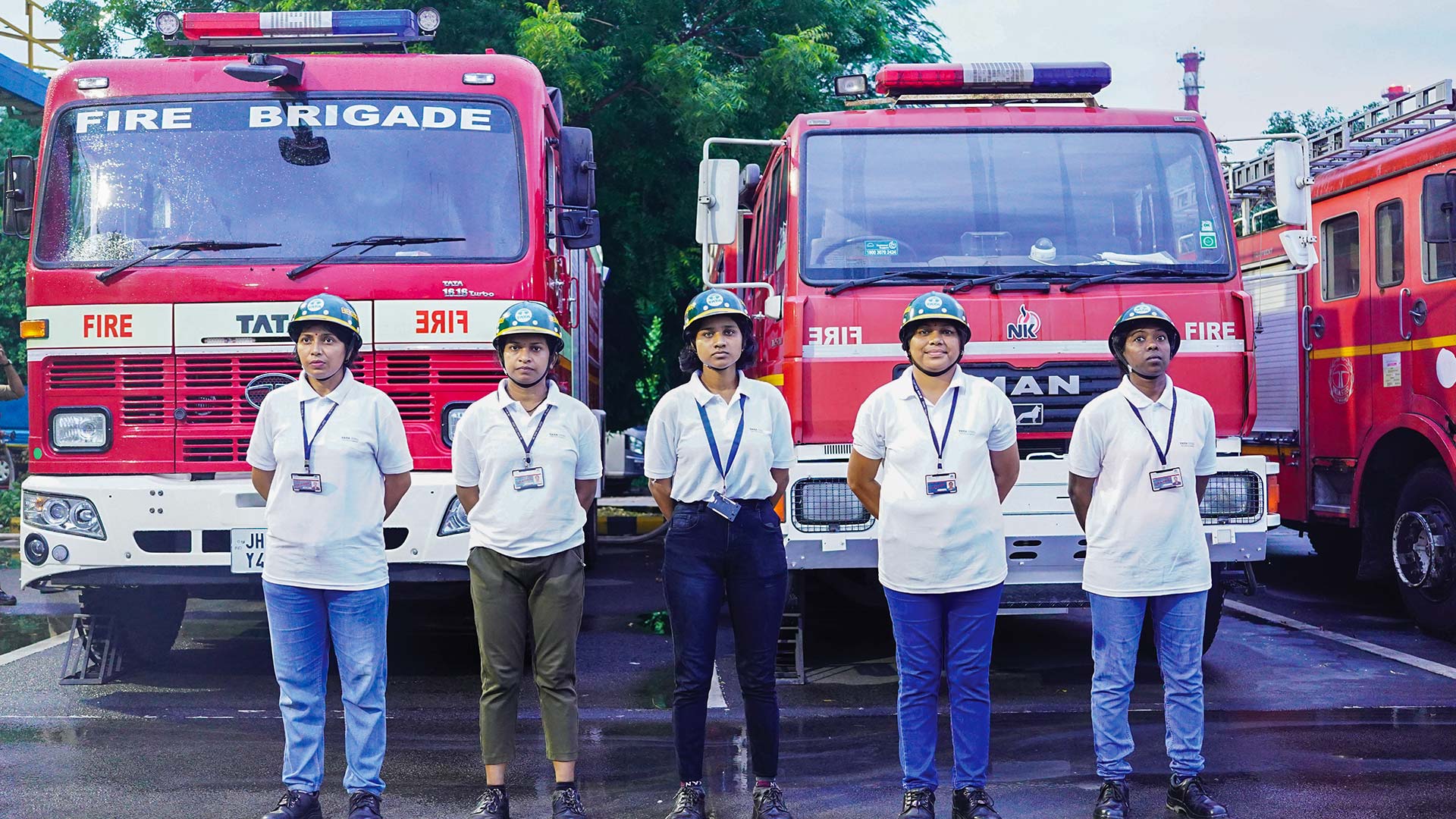May 2024 | 1484 words | 6-minute read
As part of its ‘25 by 25’ agenda — increasing the representation of a diverse workforce to 25% by 2025 — Tata Steel inducted 23 women as trainee firefighters last year.
This first-of-its-kind initiative in India’ssteel sector, named Flames of Change, was the latest noteworthy effort by the steel giant that has been recognised as a Global Diversity, Equity and Inclusion (DEI) Lighthouse in 2023 by the World Economic Forum (WEF).
WEF recognised Tata Steel’s achievement as especially remarkable, given the nature of the industries in which it operates, namely steel manufacturing, mining, and engineering and projects — all sectors where the men to women ratio of the workforce is skewed in favour of men. According to a 2019 World Bank report, women make up 8-17% of the global mining workforce, with lower representation in certain regions. With this latest initiative, the company is determined to herald change in yet another male-dominated profession — firefighting.
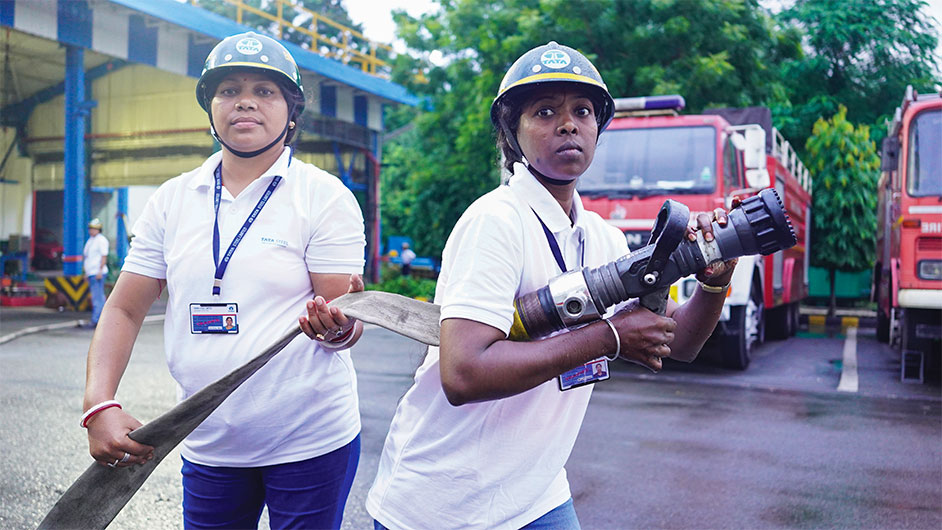
Diverse workforce, diverse support system
Tata Steel has a 100-year+ history of pioneering employee welfare practices and was recognised by WEF for its commitment to its ‘25 by 25’ goal. According to the International Labour Organization, closing the gender gap in participation by 25% by 2025 could increase global GDP by $5.3 trillion. This mission was also inspired by the company’s conviction that in order to achieve its aspiration of becoming the most valuable steel organisation in the world, with a future-ready and pioneering workforce, it needed to invest in culture as a key enabler. The Tata Steel leadership identified DEI as a central pillar of that culture because of its importance in fuelling innovation.
“While we work coherently towards this goal, it was realised that a diverse workforce also needs — and comprises — a diverse support system, especially in the case of an emergency,” says Arvind Kumar Sinha, Chief Security and Brand Protection, Tata Steel. “It was thus imperative that we strengthen our support services, such as the fire brigade, with adequate and appropriate resources to rise to the occasion. Flames of Change is a pioneering initiative to create the first-ever crew of female firefighters in the steel industry in India. As the organisation grows and we progress towards our DEI goal, we intend to further strengthen the team of female firefighters to address any need as and when it emerges.”
Finding the best and brightest
The first batch of women selected by Tata Steel had to go through the standard recruitment process for employee wards under the Registered Relations category. The batch of registered relatives is taken onboard after proper screening and a written test by Shavak Nanavati Technical Institute. Qualifying candidates are further assessed on physical parameters such as height and weight. Those that are selected then undergo a three-month training, before being inducted into the programme.
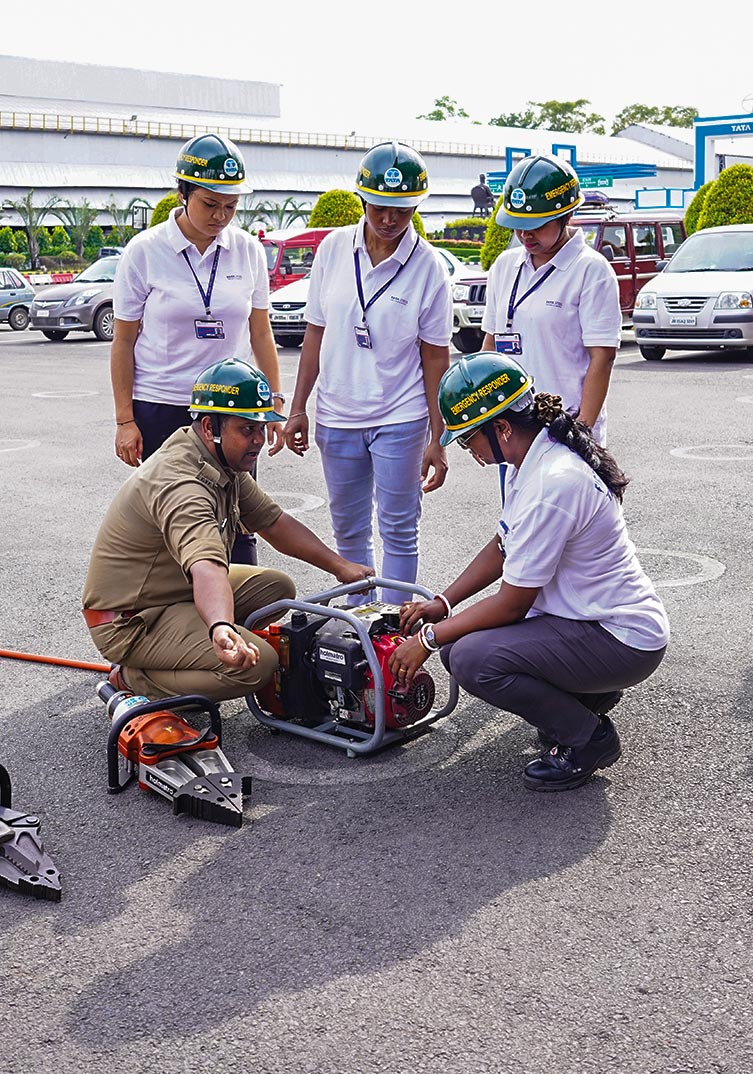
“The 23 trainees — who met these criteria — were onboarded as firefighter trainees,” says Mr Sinha. “The female firefighters have been selected on the basis of their performance and merit, and they come from diverse backgrounds and communities, including the tribal community.”
Indeed, the women trainees who have qualified for the programme are not only diverse in terms of their social backgrounds, but also in terms of their professional and educational experiences. Like 33-year-old Shomaila Khanam, who has a doctorate in material science and previously worked as a Research Fellow in a Department of Science and Technology-sponsored project from 2019 to 2022. Prior to that, Ms Khanam was a senior physics teacher at Kerala Public School for four years. Explaining her new-found passion for firefighting, she says, “When I think about working in the fire brigade and being connected to the Fire and Rescue Services team, it gives me immense pleasure. We aren’t just working for the company; we are working for society and saving lives.” The sole caregiver for her ageing father-in-law, and her 17-month-old daughter, as her husband often travels abroad for business, she adds, “As a woman, I believe there is nothing we cannot do.”
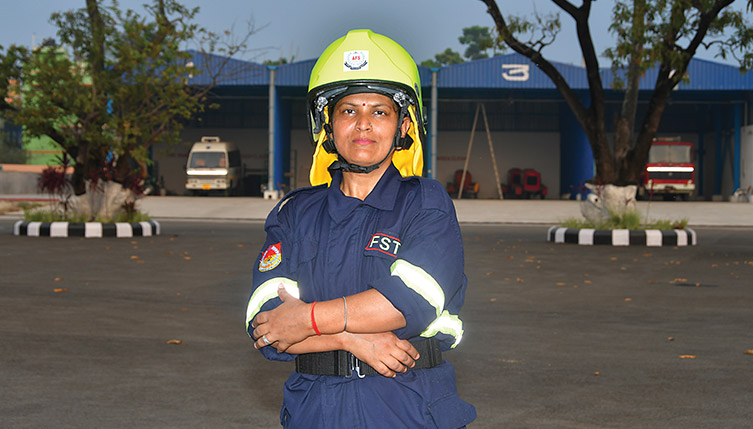
“I am proud to be training to join Tata Steel’s fire brigade, where I will not just be putting out fires, but will also be of service to humanity.”—Pratima Dubey
In contrast, 41-year-old Debashree Chatterjee has had no work experience. The commerce graduate, former homemaker and mother to a seven-year-old girl, feels proud to be a part of this one-of-a-kind programme. “The initiative by Tata Steel to include women in the fire brigade demonstrates that the company is committed to thinking about women, and diversity as a whole,” she says. “This has traditionally been a male bastion. Accepting women into the field will change perceptions in society about what women can do. I want to thank Tata Steel for giving us this opportunity, and I hope that in the future other women are also encouraged to come here and take this team forward.”
Some of the women trainees have a previous Tata connect. Take for instance, 41-year-old Pratima Dubey, who earlier worked in Tata Steel’s coke plant (CP) for a year, operating CP machines. “Whenever I think about joining the fire brigade, I feel a different kind of excitement,” says Ms Dubey. “I am proud to be training to join Tata Steel’s fire brigade, where I will not just be putting out fires, but will also be of service to humanity. I will have an identity.”
Similarly, 33-year-old Sandhya Singh, is also excited about the impact she will be able to make. “Since I was a child, my lifelong goal has been to work for society,” says Ms Singh, who has extensive experience as a nursing staff member. “Working as a Fire and Rescue Services team member is similar — it’s for the welfare of humanity.”
“This has traditionally been a male bastion. Accepting women into the field will change perceptions in society about what women can do.”—Debashree Chatterjee
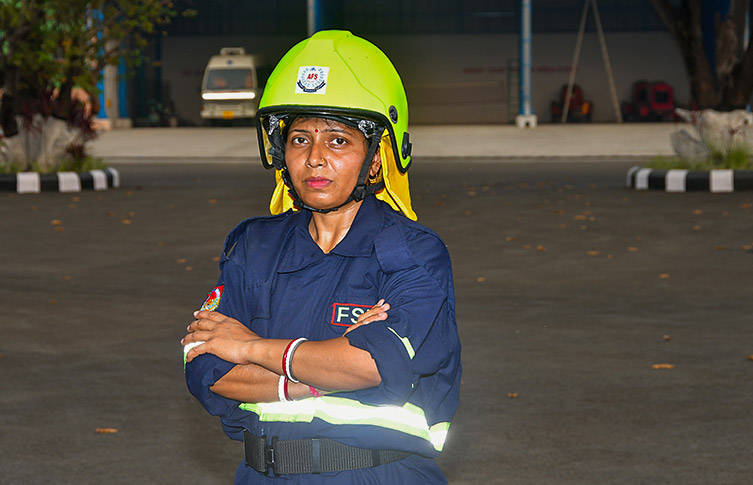
Breaking barriers
Since this was the first time that female employees were being employed by the Fire and Rescue Services department, Tata Steel had to design amenities to meet their needs. Besides building infrastructure, it was also necessary to bring about a change in the perception of existing teams. “To help the male firefighters adjust to this cultural shift at work, we launched a sensitisation campaign,” says Mr Sinha. “We also had to find a way to alleviate the nervousness some trainees were experiencing about taking on this role. For this, we held a session with Harshini Kanhekar, India’s first woman firefighter from Oil and Natural Gas Corporation, to motivate them and address their concerns.”
These efforts were necessary, given what was at stake. Tata Steel believes that the induction of women firefighters will not only help shift the mindset of the workforce, but that these women will also serve as role models for other women employees and members of the community, encouraging them to rise above stereotypes and pursue careers that have historically been considered unattainable for women. And it seems to be working. Mr Sinha shares, “Other female employees who hope to be onboarded in the future have already begun to contact us.”
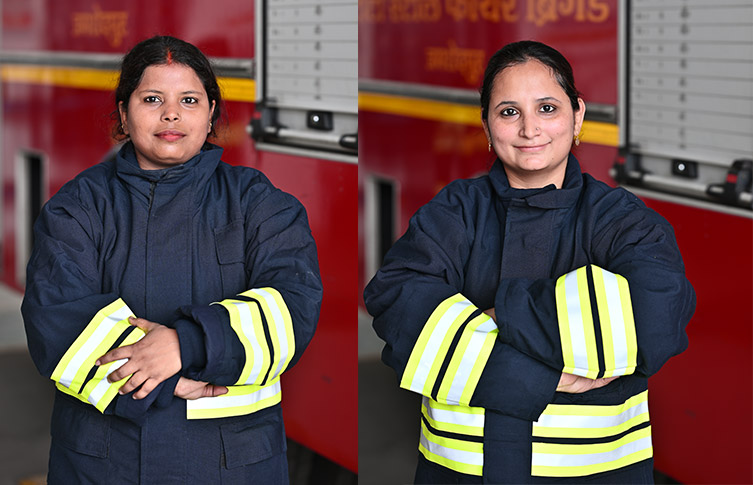
Trial by fire
Future women trainees will have to go through two phases of training, much like their predecessors. The first phase comprises a three-month, in-house basic training at the Fire and Security Training Centre under the supervision of officers and trained professionals of Tata Steel’s Fire and Rescue Services department. This training includes theory classes, simulation exercises, physical training and parade, and hands-on experience in handling various firefighting equipment. The training module is designed to acquaint all trainees with the necessary duties performed by any member of the Fire and Rescue Services team and equip them with the knowledge and skills needed for the role.
“Trainees are continuously evaluated through an assessment test, and the top 12 performers from a batch are sent forward to take on the second phase, which is an external training programme at the government’s Fire Service Training Centre at the Airports Authority of India in Kolkata,” says Mr Sinha. “After the completion of the training, they start working as full-fledged firefighters.” The first 12 women have been sent for phase 2 training, which they will complete in May 2024, and the remaining 11 will begin their phase 2 training in June 2024.
The current programme has been piloted at Tata Steel Jamshedpur, and the company envisions replicating it at other locations in the future. Mr Sinha adds, “Following the programme’s successful conclusion, we would like to work with the Tata Steel Foundation to offer qualifying girls from under-represented groups, such as tribal communities, basic firefighting training so they can pursue careers in firefighting.”
—Anuradha Anupkumar


